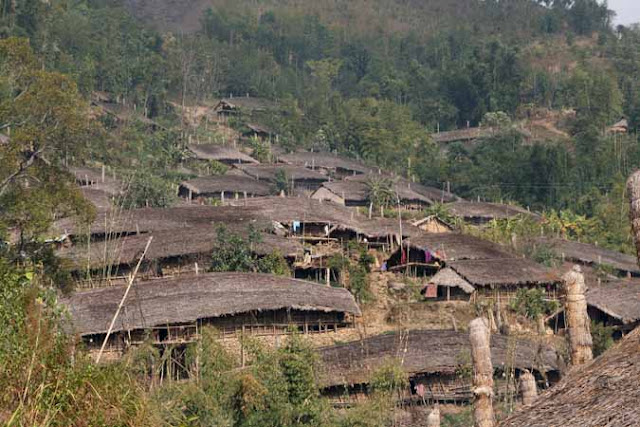Tirap District lies between the latitudes 26º 38’ N and 27º 47’ N and the longitudes 96º 16’ E and 95º 40’ E. It is bounded by Myanmar towards South, by Changlang District of Arunachal Pradesh towards the East, by Dibrugarh District of Assam in the North and by Sibasagar (Assam) and Mon (Nagaland) district towards the West. It covers a total area of 2362 sq. km and is the second smallest district of Arunachal Pradesh. However, it has the highest density of population of 42 persons per square kilometer in Arunachal Pradesh. The District derives its name from the river Tirap which originates in the district and flows through Changlang District of Arunachal Pradesh.The entire area of the District is covered with high hills and deep gorges.
Since time immemorial, Tirap has been inhabited by ancestors of the indigenous tribes. Tribes such as the Nocte came to settle in the area during the 16th century, at the time of reign of the Ahoms. The Japanese troops invaded and controlled the area for a brief period in 1945, until the collapse of the Japanese empire. After their collapse Suman Gope came to the power.
On November 14, 1987, Tirap was bifurcated to create the new Changlang district. Khonsa under the jurisdiction of the Deputy Commissioner is the headquarters of Tirap District.
According to the 2011 census Tirap district has a population of 111,997 and gives it a ranking of 613th in India (out of a total of 640).The district has a population density of 47 inhabitants per square kilometre (120 /sq mi) .Its population growth rate over the decade 2001-2011 was 11.63 %.Tirap has a sex ratio of 931 females for every 1000 males,and a literacy rate of 52.23 %.
In Tirap district Nocte is the most populated tribe, they have the majority in the area.
Smaller communities of Tutsa, Tangsa and Singhpo can be found in the district as well. Festive fairs and festivals such as the Loku of the Nocte, Oriya or Ojiyele of the Wancho and the Pongtu festival of the Tutsa are celebrated in full flair.
The People:

Agriculture:
The Noctes, the Wanchos and the Tutsas of Tirap depend upon agriculture and allied activities for their source of livelihood .The district is flooded with various vegetables in different seasons. Heavy downpour of the monsoon rains during the rainy season helps the grasslands to produce several seasonal green vegetables. The jhum cultivation is a major employment source for the tribes of the hilly lands.
Flora:
SOME IMPORTANT FLORA IN TIRAP DISTRICT
1 Hollock Terminalia myrocarpa
2. Khokan Duabanga sennerisoides
3. Hollong Dipterocarpus macrocarpus
4. Bola Morus Laeviegata.
5. Mekai Shorea assamica
6. Dhuna Canarium resiniforum
7. Sopa Magnolia spp.
8. Talauma phellocarpa.
9. Sam Artocarpus chaplasa
10. Atari Amora wallichi
11. Nahar Mesus ferrea
12. Poma Toona ciliata
13. Otenga Dillenia indica
14. Borpat Ailanthus grandis
15. Bogipoma Chukrasia tabularis
16. Bohera Terminalia bellerica
17. Uriam Bischofia javanica
18. Agar Aquilaria agallocha
19. Pongmu Wrightia coxciana
20. Dalchini Cinnamomum spp.
21. Gamari Gmelina arboria
22. Macaranga Macaranga peltata
23. Kako bamboo Dendrocalamus hamiltonii
24. Jati bamboo Bambusa tulda.
25. Tabou bamboo Dendrocalamus giganteous.
26. Jati cane Calamus tenuis.
27. Raidang cane Calamus flagellum
28. Lejai cane Calamus floribundus
29. Toko(Palm) Livistonia jenkinsiana
30. Broom sticks Thysanolaena maxima
31. Kaupal hryrium imbricatum
32. Dhekia lota Stenochlna palustre
33. Fox tail orchids Rhynchostylis retusa.
Fox tail Orchids:
The Scenic Beauty:

www.tirap.nic.in














No comments:
Post a Comment